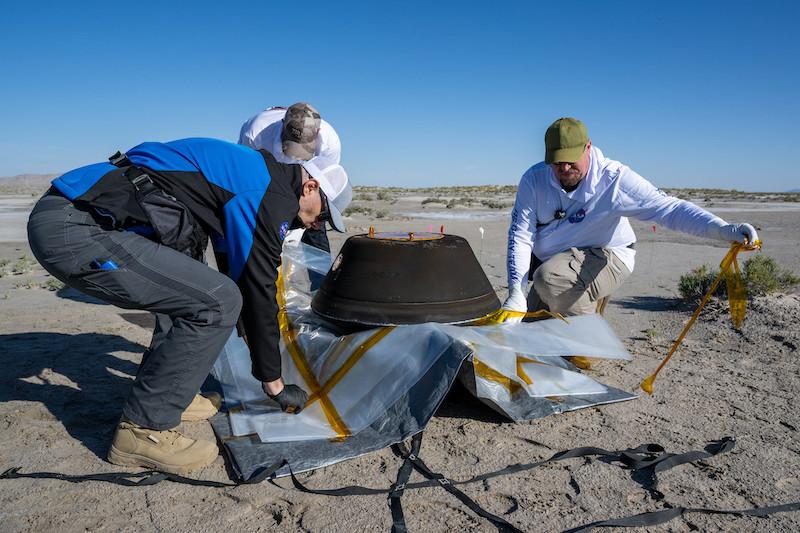
Recovery teams prepare the Sample Return Capsule for transport to a temporary cleanroom at the Defense Department's Utah Test and Training Range.
Credit: Keegan Barber/NASA
The largest haul of extraterrestrial samples since Apollo 17 landed in the western Utah desert on Sept. 24, marking the end of a seven-year, 4-billion-mi. mission to the asteroid Bennu in a quest to learn more about the primordial Solar System, resources for potential future exploitation and the...
Subscription Required
This content requires a subscription to one of the Aviation Week Intelligence Network (AWIN) bundles.
Schedule a demo today to find out how you can access this content and similar content related to your area of the global aviation industry.
Already an AWIN subscriber? Login
Did you know? Aviation Week has won top honors multiple times in the Jesse H. Neal National Business Journalism Awards, the business-to-business media equivalent of the Pulitzer Prizes.




